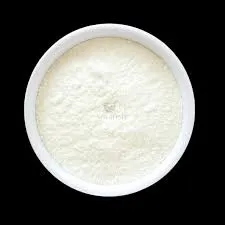
gen. . 01, 2025 14:43 Back to list
Exploring the Properties and Applications of Hydroxyethyl Cellulose in Various Industries
Understanding Hydroxyethyl Cellulose A Versatile Polymer
Hydroxyethyl cellulose (HEC) is a water-soluble polymer derived from cellulose, which is a natural polymer found in the cell walls of plants. It is a white, odorless powder that has gained significant attention in a variety of industries due to its unique properties and versatility. In this article, we will explore what hydroxyethyl cellulose is, its production process, and its multifaceted applications across different sectors.
What is Hydroxyethyl Cellulose?
HEC belongs to the class of non-ionic, cellulose-based polymers that are modified to enhance their solubility in water. Its structure consists of repeating units of cellulose with hydroxyethyl groups attached, which facilitates increased solubility and thickening capabilities. This modification allows HEC to exhibit unique rheological properties, making it a valuable additive in many formulations.
Production Process
The production of hydroxyethyl cellulose generally involves the etherification of cellulose with ethylene oxide in an alkaline medium. The process starts by treating cellulose, often derived from wood pulp or cotton, with sodium hydroxide, which facilitates the reaction with ethylene oxide. As the reaction proceeds, hydroxyethyl groups are introduced into the cellulose structure. The extent of substitution – that is, how many hydroxyethyl groups are attached – can be controlled to yield different grades of HEC, each with distinct attributes suited for various applications.
Applications of Hydroxyethyl Cellulose
One of the key attributes of hydroxyethyl cellulose is its thickening ability, making it a popular choice in the formulation of various products
1. Cosmetics and Personal Care HEC is widely used in the cosmetics industry due to its ability to thicken and stabilize formulations. It is commonly found in shampoos, creams, lotions, and gels, providing a smooth texture and enhancing the product's performance. Its film-forming properties also make it effective in hair styling products, allowing for better hold and manageability.
hydroxyethyl cellulose

2. Pharmaceuticals In the pharmaceutical sector, hydroxyethyl cellulose is utilized as a binder, drug release agent, and thickening agent in various formulations. Its compatibility with both hydrophilic and lipophilic substances makes it an ideal choice for formulating tablets, gels, and other dosage forms.
3. Food Industry HEC finds application as a food additive, serving as a thickener, emulsifier, and stabilizer. Its ability to retain moisture makes it useful in processed foods, sauces, and dressings, improving texture and extending shelf life.
4. Construction and Building Materials In the construction industry, HEC is used in cement-based products, adhesives, and paints. It enhances the workability and adhesion of these materials, providing excellent water retention and improving the strength and durability of the final product.
5. Agricultural Applications Hydroxyethyl cellulose is also used in the agriculture sector as a thickener for pesticides and herbicides, enhancing the uniformity of the spray and improving coverage on plant surfaces.
Environmental Impact and Safety
One of the major advantages of hydroxyethyl cellulose is its biodegradable nature, making it an environmentally friendly choice compared to many synthetic polymers. It is generally recognized as safe (GRAS) by regulatory bodies when used in food applications, reflecting its low toxicity and favorable safety profile.
Conclusion
Hydroxyethyl cellulose is a remarkable polymer with extensive applications across various industries, from cosmetics and pharmaceuticals to construction and food. Its unique properties, such as thickening, stabilizing, and moisture-retaining capabilities, make it a versatile ingredient in many formulations. As industries continue to seek natural and effective additives, the demand for hydroxyethyl cellulose is likely to grow, solidifying its position as an essential component in modern product development. Understanding HEC's properties and applications reveals its potential in contributing to innovative solutions that meet today's consumer needs while maintaining environmental sustainability.
-
tile-bonding-additives-for-stronger-bonds
NewsAug.22,2025
-
construction-grade-rdp-for-wholesale-needs
NewsAug.22,2025
-
trusted-wholesale-hec-partners
NewsAug.22,2025
-
hec-solutions-for-industrial-excellence
NewsAug.22,2025
-
construction-additives-need-hpmc-essentials
NewsAug.22,2025
-
hpmc-versatile-cellulose-ether-for-industries
NewsAug.22,2025







